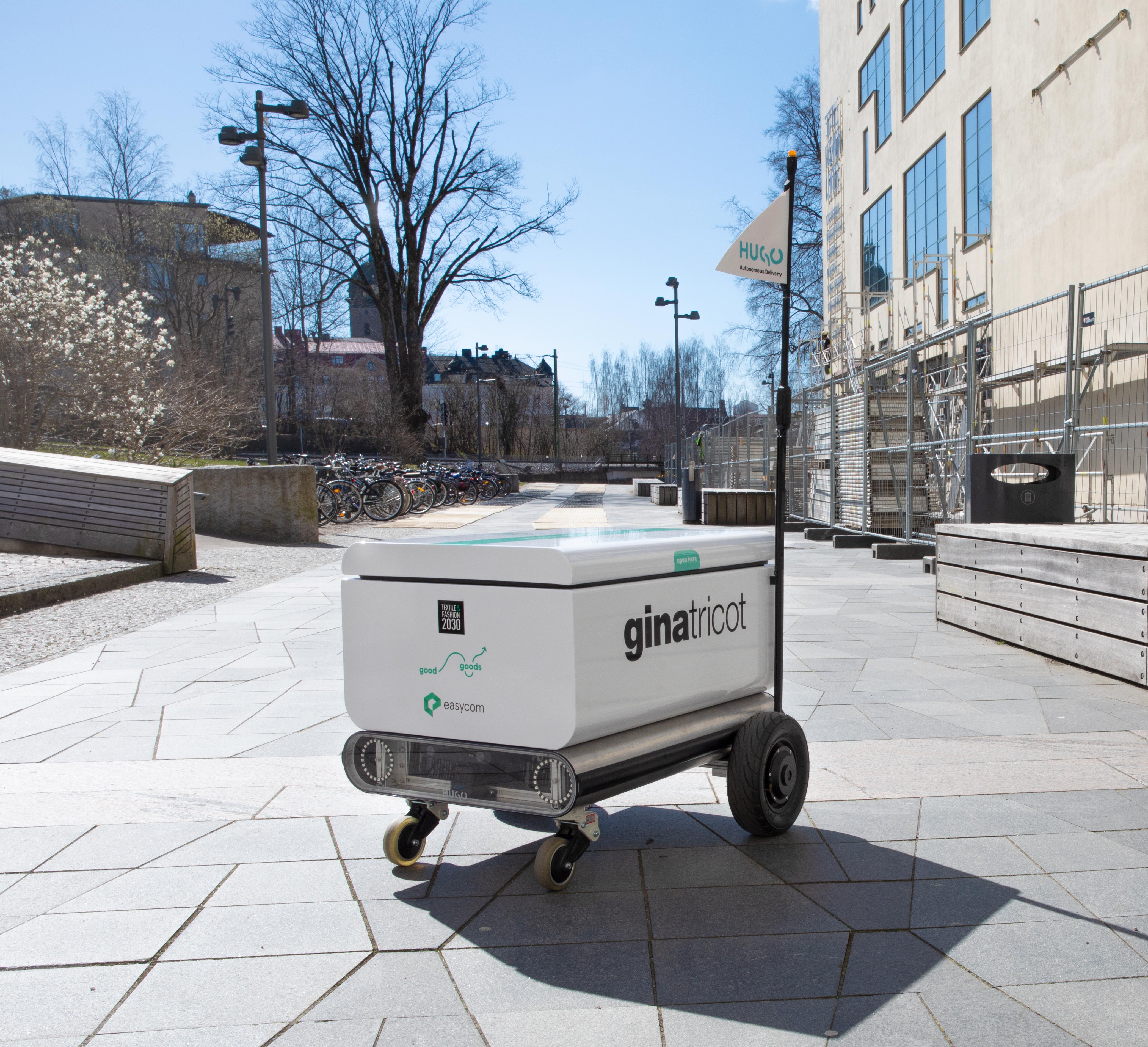
- Hugo Delivery Robot
- Innovative Techniques

One of the challenges with the sharing economy is the activity of sharing. Somebody will have to ride their bike, drive their car, go by bus or walk to pick something up at somebody’s house. The idea is that an autonomous delivery vehicle will do this instead and significantly lower the threshold for sharing garments, and other products. Deliver robots also have significantly lower climate impact and a lower physical footprint than a conventional delivery vehicle.
Berge Consulting, Care of Carl, Gina Tricot, Easycom, Borås Stad
Resource efficient technologyEnable sharing economySustainable consumer behavior
On average 13% (up to 25%) of climate impact from fashion consumption comes from use phase transportation, which includes transport to and from stores and pick-up points. Electric delivery robots have significantly lower climate impact, as much as 99,8% lower compared to conventional delivery vehicles and at a considerably lower cost. At around 2 SEK per deliverysuch technology provides opportunities to support a prosperous sharing economy.




Thinking about technology means thinking about politics and culture, technology on its own will
solve nothing. Technology does however give us a vehicle to envision a system of 0% waste and 100%
circularity with positive impact on society and natural systems. Use of digital tools can minimize
waste in the design process, product development and retail operations. Digital tools enable
manufacturing close to the end consumer that can significantly reduce over production. It can also
help consumers of fashion and textile products to make smarter decisions.
All group objects:
There is increasing pressure on retailers to transform their business models due to new buying patterns, sales channels, and more conscious consumption behaviors.
The role of the physical retailer as a seller of goods is undergoing a transformation as online retailers can deliver the same products to the doorstep of the customer at the same price. More and more stores do not only sell products but also give the customer access to additional experiences. Together with new digital tools for sales and production, the customer can have better in-store experiences, be more loyal to the brand, and help to create more sustainable business models.
With inspiration from digital business models such as Spotify, we can create systems for apparel and textiles in which the consumer has access to more fashion and textiles and spends more money, but without the increased sustainability cost. With these new systems, people can express themselves through fashion or interior design.